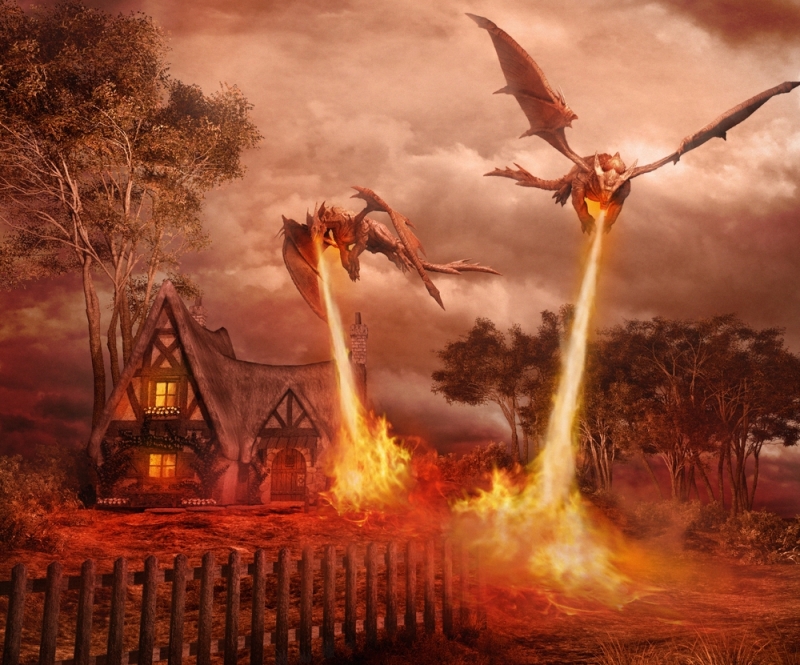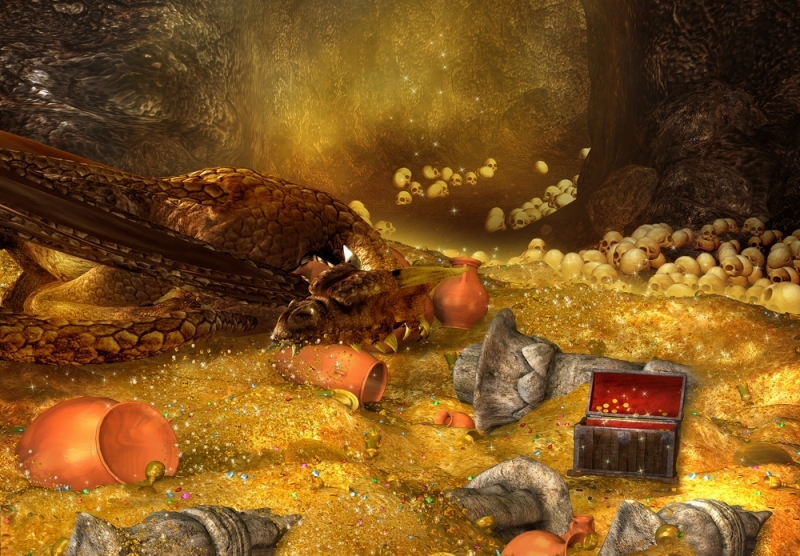 In keeping with the brave tradition of gullible, single-source reporting, here’s an astounding science news report. It ran in the News and Views section of the prestigious journal, Nature, a couple weeks ago, I don’t know how I missed it, and it surely deserved more than the brief flurry of attention it got on Twitter. In brief: global warming will almost certainly trigger The Third Stirring of the world’s dragons. The report’s authors, borrowing a phrase from Geoffrey of Exmouth, say this will be “the bigge one.”
In keeping with the brave tradition of gullible, single-source reporting, here’s an astounding science news report. It ran in the News and Views section of the prestigious journal, Nature, a couple weeks ago, I don’t know how I missed it, and it surely deserved more than the brief flurry of attention it got on Twitter. In brief: global warming will almost certainly trigger The Third Stirring of the world’s dragons. The report’s authors, borrowing a phrase from Geoffrey of Exmouth, say this will be “the bigge one.”
 Reading such a report, the first thing a skeptical science writer wants to do is check any related peer-reviewed literature (not much there) and the provenance of the authors (two Australians, one an expert in horticultural pests and the other in ecology; and one Brit named Robert, Lord May of Oxford, ecologist at Oxford University, ex-President of The Royal Society, ex-Chief Scientific Adviser to the UK Government) (solid even eminent scientists all, no skepticism needed).
Reading such a report, the first thing a skeptical science writer wants to do is check any related peer-reviewed literature (not much there) and the provenance of the authors (two Australians, one an expert in horticultural pests and the other in ecology; and one Brit named Robert, Lord May of Oxford, ecologist at Oxford University, ex-President of The Royal Society, ex-Chief Scientific Adviser to the UK Government) (solid even eminent scientists all, no skepticism needed).
The scientists discovered a long-hidden manuscript by Geoffrey of Exmouth, showing that during the early medieval period in Europe, dragons were a top predator enjoying “a veritable paradise.” They nested on silver and gold, which was only currency at the time and therefore freely available. Their “buccal and nasal furnaces” depended on unusually warm climate, which the early medieval enjoyed. Their food – principally knights — was plentiful and self-renewing. And their only predation came from the witches and wizards commanding the appropriately powerful spells.
But then around the beginning of the 1400s, as the incidence of knights fell and the Little Ice Age moved in, dragons began their Great Sleep, over a century of the wakeful kind of hibernation called brumation practiced by endotherms. The Great Sleep lasted until 1586, when it was interrupted by an 11-year period called The First Stir, during which dragons woke fitfully, noticed continuing cold and a “bewildering lack of knights,” and went back to sleep. After a Second Stir and re-sleepening, between 1680 and 1690, the numbers and societal influence of witches and wizards correspondingly declined — in accordance with the predator/prey rules that May himself helped establish. In this time of rare knights, few witches and wizards, and inert dragons, social views of dragons shifted from a fearful reality to a silly imagining.
But this shift, argue the authors, may have itself been a (dragon-linked? they do not specify) neurotransfer spell that moved all neural traces of dragons, once distributed widely throughout the brain, to the small lobe of the neocortex responsible for imaginative thought. As a result, after The Second Stir, any observations of dragons were written off as hallucinatory and safely ignored.
The situation’s ecology would seem infinitely sustainable, were it not for the continued reality of dragons; and as scientists say, absence of evidence is not evidence of absence. In fact, the authors warn, conditions are conducive to a Third Stir. Decades of wishful thinking but damn little action on global warming have led to the rises in ambient temperature necessary for the optimal health of draconian furnaces. Decades of economic downturn have led to increased investment in hard currency, which in turn has led to “quantitative thieving” of the dragons’ nests. The unfortunate result would be that a briefly-awakening dragon would undergo the adrenaline jolt of burglery and rouse itself from brumation hell-bent on revenge.
Moreover, the authors worry that the comforting power of the neurotransfer spell may be fading and humans’ awareness of dragons might be intensifying. Recently a Canadian evolutionary biologist published the dragons’ phylogeny. And a British ecologist published “a nonfiction manuscript on dragons in Nature.” (Closer inspection of this nonfiction manuscript — paywall, sorry; write me if you want a PDF — shows it to be a self-citation on the part of the same eminent Robert May, who happens to be a knight, and consists principally of him getting his knickers in an uproar about the relative speciation of the six-limbed canonical dragons and the four-limbed wyvern and cockatrices, while stoutly refusing to be sidetracked into the controversy over the species of similarly four-limbed angels.)
What with a warming earth, a fading neural block, and a renewed food supply triggered by “policies such as the restoration of knighthoods in Australia” (on even closer inspection, Robert May turns out to be not only a knight but also actually a native Australian), the authors predict that it is only a matter of time before The Third Stir. A commenter on their report raises the disturbing possibility of a further renewed food supply in damsels in distress, but asks whether “damsels are considered alternate dragon fodder, or only bait for knights.” In an abundance of caution, damsels might want to avoid being subject to distress.
The authors recommend the obvious — increasing research in consumer-friendly fire-resistent clothing — and further suggest that monarchs desist from running around conferring knighthoods.
________
Most of the phrases and sentences I plagiarized are in quotes.
________
Dragons, which predate photography, in artists’ impressions: courtesy of Shutterstock
So nice meeting you at Common Ground. I found Cameron’s article on her mother and Alex Filippenko. So great. Brought back memories of how much I loved that class — my introduction to astronomy, physics, and the otherworldly wonders of science (e.g. dragons).
I enjoyed meeting you too. Good luck to you.
What you fail to directly mention is the Nature article appeared on April 1.
I rely on the smartness of LWON readers and obviously, not wrongly.